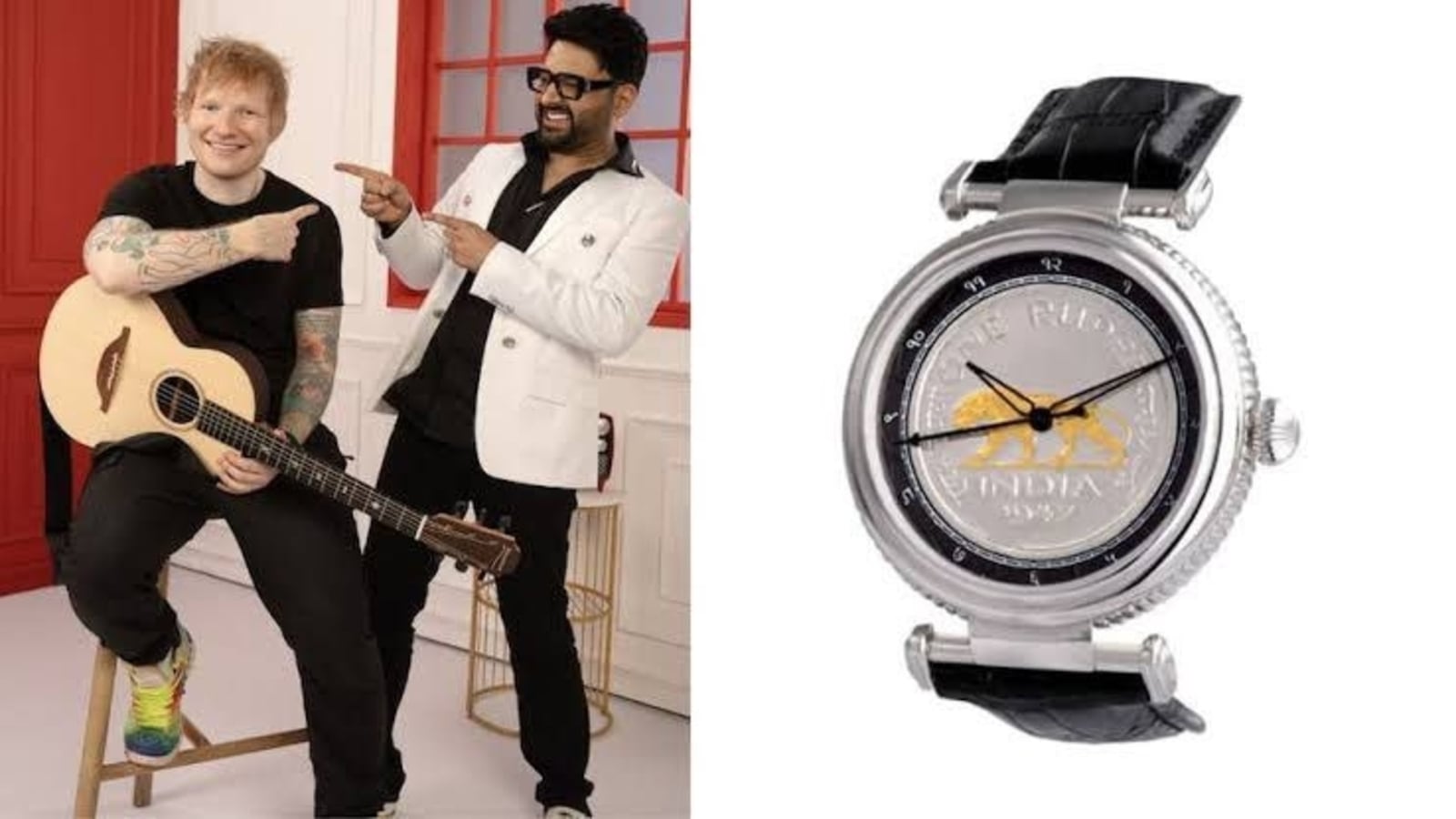Earlier this year, international pop icon Ed Sheeran made local news following his appearance on Netflix’s The Great Indian Kapil Show. Sheeran, who was touring the country, appeared as his usual dressed-down self, sporting a black t-shirt and black trousers not drawing any attention. What did draw attention was what occupied his wrist – an Devanagari Baagh watch made by the Jaipur Watch Company.
Sheeran had opted to wear the watch, which featured a Japanese Miyota movement retrofitted into a 1947-issue one rupee coin, instead of the Audemars Piguet he wore onto the show’s set. It was a moment of reckoning for India’s independent watchmakers. Meet the Independent Watchmakers of India Founded eleven years ago, the Jaipur Watch Company is at the vanguard of niche Indian watchmakers tapping into the Indian aesthetic while also offering bespoke craftsmanship at a far more affordable price point.

Jaipur Watch Company made a name by offering a series of coin-based watches making it its aesthetic mainstay while also tapping into the works of Indian artists like Raja Ravi Verma and displaying them on a horological canvas. Its founder Gaurav Mehta categorises the brand as a “bridge-to-luxury”. Something that is unique and mechanically complex enough to fall out of the confines of affordable FMCG brands and yet, be more affordable than high-end Swiss watchmakers who charge a premium for brand equity.
The Jaipur Watch Company is far from the only upstart. Based out of Bengaluru, the birthplace of Indian horology, is a watch company that serves as the spiritual successor to HMT watches – Independent India’s first horological start-up, which was founded in Bengaluru in 1963. The Bangalore Watch Company, founded by Nirupesh Joshi and Mercy Amalraj, the brand has a more modern aesthetic, powered by a Swiss automatic movement instead of a Japanese one.
It’s founders, who grew-up on HMT watches, cite the brand as a major influence. The one common attribute among all brands is the use of stainless steel cases, leather straps and sapphire crystals – all of which now have a functional supply chain ecosystem within the country. However this wasn’t always the case.
“When I started 11 years ago, there was no supply chain to speak of,” says Mehta, who recently raised ₹ 2.4 crore in funding and intends to expand the brand’s retail network with the funds. “People attribute our success to the absence of any local competition, but the fact is there were no clients either.
The whole supply chain was broken. There were no retailers. Today, at least 40% of my sales come through Instagram” says Mehta, adding that today there is a thriving supply chain for stainless steel cases, dial covers, leather straps and metal bracelets.
Another common attribute shared between the likes of the Jaipur Watch Company, the Bengaluru Watch Company and relatively younger watch brands like Horpa, is the use of an imported automatic movement, either Japanese (Miyota, Seiko etc) or Swiss in origin (ETA). For any watchmaker worth its salt, the natural progression involves manufacturing an in-house movement. However, watchmakers like Mehta have no immediate plans of delving into the movement manufacturing space.
The reason is scale. “There is a big Indian watch brand that recently introduced an automatic movement. When I saw the pricing, I realised that for us, this isn’t the right time to introduce an in-house movement.
If there’s no scale there’s no profitability. If I can do a million movements a month, then I can compare that price point to a Japanese movement manufacturer. In India we’re not at that scale where we can consume a million movements”.
Mehta is referring to the introduction of an in-house movement by Indian watchmaker Titan, a longtime purveyor of mass market quartz-powered watches, which has launched its own automatic watches at a scarcely believable price point of ₹ 10,000. “ “We are looking at introducing new complications though, not in-house made, but outsourced” For watchmakers like Jaipur Watch Company and the Bangalore Watch Company, the USP lies in aesthetic, craftsmanship and in the former’s case – a slice of Indian history. Among its mainstays is a series of watches with vintage Indian postage stamps on the dial.
These, along with other collections have found an audience both in India and outside it. “We now sell about 7-8 pieces per week overseas” says Mehta. Most of their overseas buyers belong to the Indian diaspora, but roughly 30% buyers from Singapore, Australia and the US belong to various ethnicities wanting to own a watch that’s truly Indian.
Mehta also states that a lot of buyers in India are fledgeling watch collectors looking for an accessible, automatic timepiece. But there are also well-heeled clients with an array of expensive Swiss watches, who want something unique.With most of the consumer base over the age of 30, Mehta is yet to tap into a growing demographic of young watch buyers which opt for affordable wearable tech (aka smartwatches) falling under ₹ 10,000.
Brands like Fit-Bit, Noise and Boat occupy the lion’s share of the wearable tech market (over 60%), edging out incumbents like Apple and Samsung, which for a few years, had the field all to themselves. Now the market is flooded with new, unknown brands offering basic smartwatch functionality at very low price points. However, Mehta attests that, given his brand’s price point (upwards of ₹ 40,000) the average smartwatch buyer’s interests do not overlap.
“So many low-priced smart watches are available. so definitely there is an impact on the sub ₹ 10k segment of the watch industry. But when you go above the ₹ 10k category, I don’t think there’s much of an impact.
People have stopped wearing smartwatches for formal events and special occasions. And four years back it wasn’t the case” Mehta’s competition came from low-cost watchmakers offering a sort of faux aesthetic of haute horology, at a low price point. International brands like Daniel Wellington, which essentially sell low-cost quartz powered watches at price points exceeding ₹ 15,000, offer little value in terms of mechanical sophistication, or material superiority.
“Thanks to connoisseurs and experts on Instagram there is a lot more brand awareness. People know which avenues to look toward for high-value products. As a result our sales have increased four times in the last three years”.
.



















